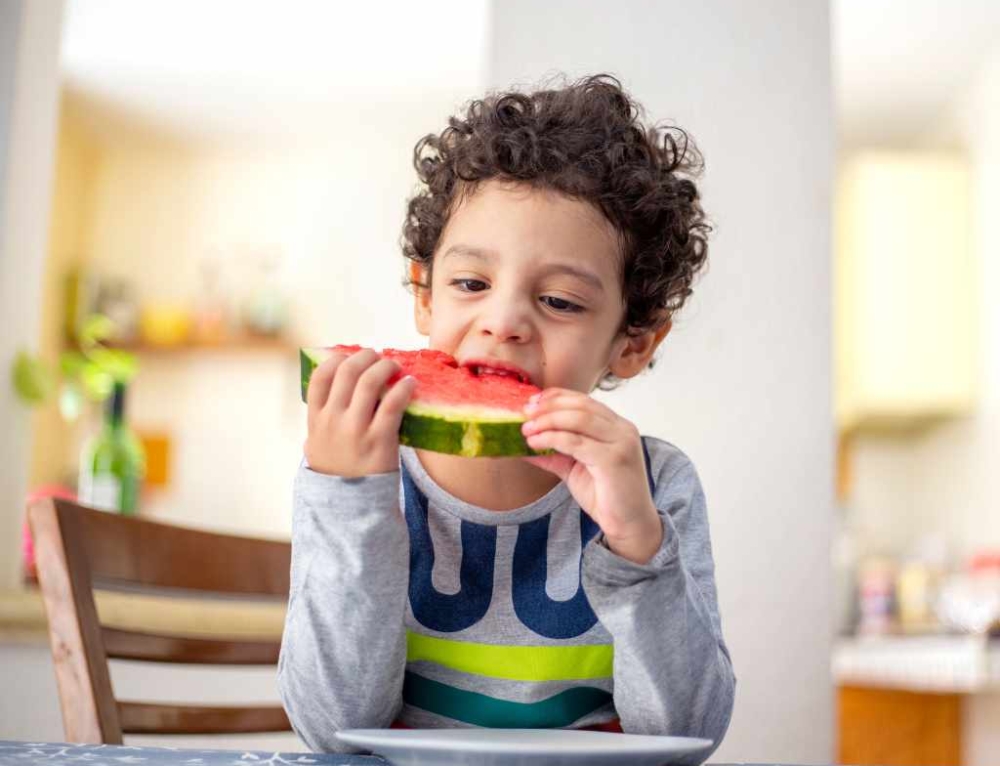Most Mums know that fibre is an important part of a diet maintaining health and general well-being. The challenge can be eating enough each day but adding fibre to your child’s diet doesn’t have to be a chore if you have a good understanding of what foods to look for.
Fibre Fact #1 – Kids need fibre
The National Health and Medical Research Council recommends fibre intakes that vary with the age and gender of children:
- Boys and girls aged 1-3, 14 grams per day
- Boys and girls aged 4-8, 18 grams per day
- Boys aged 9-13, 24 grams per day
- Boys aged 14-18, 28 grams per day
- Girls aged 9-13, 20 grams per day
- Girls aged 14-18, 22 grams per day
Fibre Fact #2 – There are different types of fibre
Fibre is made up of some carbohydrates in plant foods that are not digested in the small intestine. It passes through to the colon where it is used by ‘friendly’ bacteria. There are three main types of fibre: soluble, insoluble and resistant starch. Fibre helps to maintain the ‘friendly’ bowel bacteria that are important to maintain a healthy digestive system. Foods rich in fibre are also more satisfying so can help reduce hunger levels between meals.
Fibre Fact #3 – It’s important to eat a variety of high-fibre foods
Fibre is found in plant foods such as cereal grains, fruit, vegetables, nuts, seeds, beans and lentils. Different types of fibre perform different roles in the body so you need to ensure kids get enough fibre from a range of foods to maintain good health. Some examples of food sources of the different types of fibre are:
- Soluble fibre helps regulate food absorption. Soluble fibre is in oats, barley, psyllium, vegetables, lentils, beans and fruit.
- Insoluble fibre helps maintain regular bowel movements and is in wheat bran, wheat based cereals and pasta and wholemeal bread.
- Resistant starch helps keep a balance of friendly bacteria and is in legumes, intact whole grains, firm bananas and cold cooked potatoes
Fibre Fact #4 – Fibre is important for the whole family
It’s not just kids that need fibre. To maintain digestive health the National Health and Medical Research Council recommends that women eat 25g of fibre each day and men 30g. If you are increasing your fibre intake make sure to drink plenty of water and get at least 30 minutes of exercise every day.
Tips to boost your child’s fibre intake:
- Read labels to help you choose foods that contain fibre. The claims for fibre on food packages are regulated by an industry Code of Practice:
- Very high in fibre or excellent source of fibre = at least 6g of fibre/serve
- High fibre or good source of fibre = at least 3g of fibre/serve
- Provides fibre or source of fibre = at least 1.5g of fibre/serve
- Choose bran or wholegrain cereals and wholemeal or High-fibre white bread, pasta or brown rice.
- Offer them fruit, vegetables, nuts and seeds as snacks.
- Leave the edible skin on fruit and vegetables.
- Give them baked beans on wholemeal toast as a snack or add beans and lentils to soup, casseroles or salads







Leave A Comment
You must be logged in to post a comment.